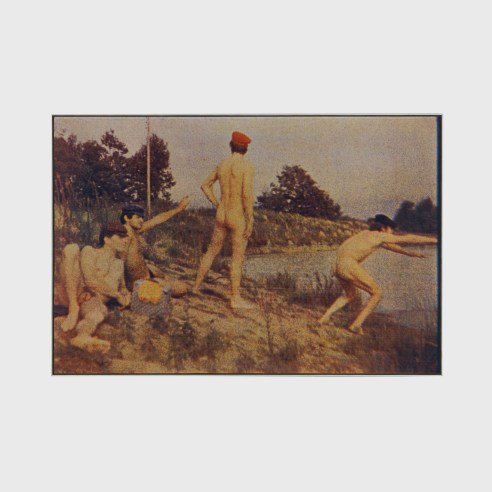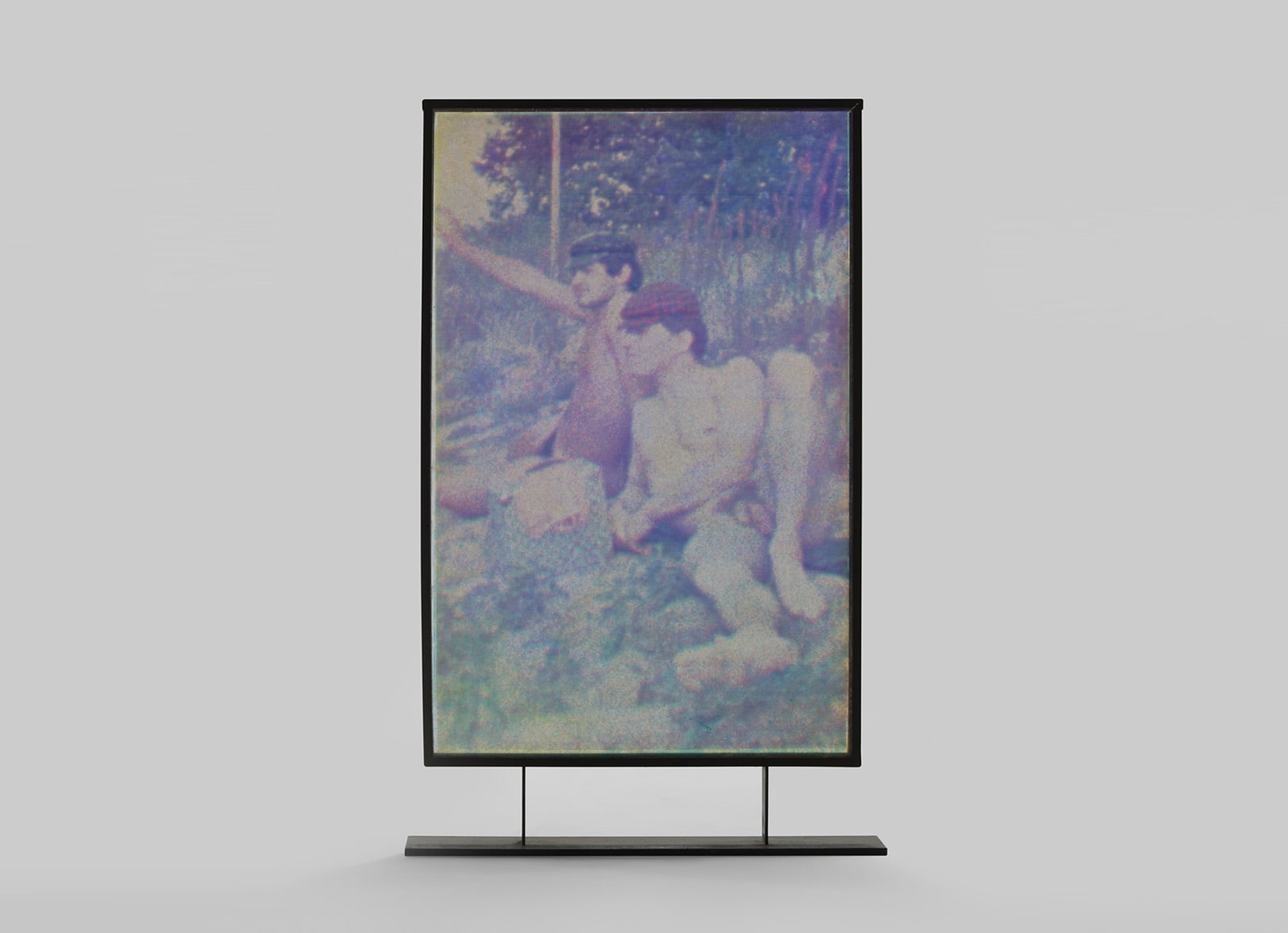

Alain Jacquet, Swimming Hole, 1966-1968
In 1966, Alain Jacquet (French, 1939 – 2008) created his interpretation of Thomas Eakins' (American, 1844-1916) famous painting The Swimming Hole (1884-85), part of the Amon Carter Museum Collection in Fort Worth, Texas. As with his seminal work Déjeuner Sur l'Herbe (1964), a nod to Édouard Manet’s original, Jacquet deconstructed the image in multiple versions, enlarging details on Plexiglas and canvas and using various frames with added support. Eakins has been recognized as one of the most notable American realists, however, he was relatively unknown in France during Jacquet’s time, making it difficult for the public to interpret this referential work. Although Swimming Hole (1966-1968) didn't achieve the kind of critical acclaim as Déjeuner, the work is known to be one of the artist's favorites.

Thomas Eakins, The Swimming Hole, 1884-85
Eakins was among the first artists to incorporate photography into his practice, using his personal photos as references for other mediums. After Jacquet became familiar with Eakins, this shared interest would not have failed to be seducing, for Jacquet’s work is based on the reproduction and manipulation of photographs. Often appropriating emblematic paintings or mass-media images by distorting certain details through mechanical techniques like screen printing onto new materials.

Alain Jacquet, Thomas Eakin's Swimming Hole, Detail, c. 1966-1968
Eakins’ The Swimming Hole was controversial for 19th century critics and audiences, for its display of men swimming nude together, which resulted in the work being too readily dismissed. Jacquet’s version appeared at the end of the 1960s, a period of moral and sexual liberation in both France and America. Even with a more accepting public, his nude male figures still caused embarrassment and discomfort, preventing an in-depth and historically situated reading of the work.
It is important to note that at the beginning of the 1960s Jacquet traveled to New York, a city that adopted him and where he first exhibited works at Alexandre Iolas. Jacquet’s relationship with American culture shaped his career, particularly his affiliation with artists like Roy Lichenstein and Andy Warhol and his direct association to the Pop Art movement.
